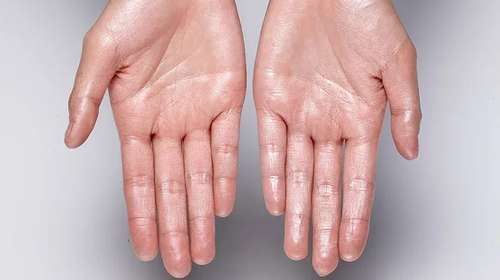It’s the third and final part of our complete guide to cosmetic injectables, and we’re putting dermal fillers under the spotlight. In this post, you’ll find out how the most popular fillers work and what they’re used for, who is allowed to administer fillers, and how patients benefit from fillers.
We’ll touch briefly on what the average session goes like, and look at potential side effects. By the time you get through, you should know all you need to know about one of the most desirable additions to your scope of practice.
We’ll start at the beginning.
What are dermal fillers?
Dermal fillers are gel-like substances that are injected under the skin. The goal is usually to create a smoother appearance for the skin itself, or to create volume in small areas under the skin to subtly change the shape of the face.
With only one exception, dermal fillers are temporary, with effects lasting from 6 to 18 months. This means that repeat treatments are needed to keep the effects. The FDA regulates fillers as medical devices.
How do dermal fillers work?

Dermal fillers usually work by literally filling in the volume under your skin. Small amounts are injected subcutaneously to ‘re-stretch’ skin smooth, reducing the appearance of wrinkles. They can also be used to fill in areas in the face where volume has been lost or where the face is asymmetrical or has been injured in some way.
Some dermal fillers work by stimulating the body’s own production of collagen, while others are used to directly fill volume. Some, like polyalkylimide, are a combination of these two approaches. Almost all dermal fillers are made of substances naturally found in the body and are broken down naturally over time.
Types of dermal fillers
To be used as a dermal filler, a substance must be approved by the FDA, and this approval is often for specific procedures. Substances approved as fillers include:
Hyaluronic acid
Often branded as Captique, Hylaform, or Juvederm, hyaluronic acid is a long-chain sugar that’s naturally found in the skin, as well as in soft connective tissues, cartilage, joint capsules, and the fluid around your eyes. It’s well-tolerated and the body simply ‘recycles’ it over time.
Hyaluronic acid is used for:
- Cheek depressions
- Crow’s feet at the corners of eyes
- Scars, including burns, wounds, and acne scars
- Skin damage caused by smoking and sun exposure
- Worry lines and other facial lines and wrinkles
Polylactic acid
Often offered under the brand name Sculptra, polylactic acid is a type of synthetic filler called a ‘stimulator,’ that works by stimulating your body to produce collagen. Non-toxic and biodegradable, the same material has been in use for over 40 years as a suture material. It’s particularly effective on the lower part of the face and is used for:
- Laugh lines
- Plumping thin lips
- Deep folds and creases like nasolabial folds
Because it works by stimulating your body’s natural production rather than by filling in volume itself, polylactic acid is slower-acting than many alternatives, taking six to eight weeks for the full effects to become visible. However, it’s also longer-lasting, and can be regarded as semi-permanent, requiring occasional touch-ups rather than regular maintenance treatments.
Calcium hydroxylapatite
Available as Radiesse, calcium hydroxylapatite is a mineral-like compound that has a long safety record, starting in dentistry and reconstructive surgery. It’s used for:
- Moderate to severe creases and lines
- Contouring and adding volume to the face
It’s widely used to counter facial wasting (thinning and loss of volume) arising from certain HIV medications and from age. It’s produced biosynthetically, reducing the risk of allergic reactions and obviating the need for skin testing. It doesn’t migrate, typically looks very natural, and rarely causes side effects.
Polyalkylimide
A semi-permanent dermal filler often branded Aquamid, polyalkylimide is often used by plastic surgeons to treat:
- Deep facial folds and wrinkles
- Thin lips
- Enhance facial features like cheekbones and jawline
- Replace facial volume lost to aging or illness
- Treat facial wasting caused by HIV medication
Polyalkylimide doesn’t react much with human tissue, so allergy tests aren’t required, and it’s radio-transparent so it doesn’t interfere with X-rays. It’s derived from bovine collagen, and is the only FDA-approved filler that isn’t absorbed by the body.
Unlike polylactic acid, it stimulates collagen production physically rather than chemically; over about four weeks, the filler becomes encased in a thin layer of collagen. It’s highly stable, can be used in large volumes in a single treatment, and can even be removed if necessary.
Polymethyl-methacrylate microspheres (PMMA)
A semi-permanent filler often sold as Bellafill, PMMA is typically used to treat deep wrinkles and folds, especially nasolabial folds. It can also be used for pitted scars and thin lips. Because it’s longer-lasting, it’s a popular choice in place of collagen replacement or hyaluronic acid, and it has been used for many years in permanent surgical implants. Therefore, the typical treatment is conservative, under-injecting and correcting up in later treatments. It can take as long as three months to see the full effects, and injecting correctly without forming visible lumps under the skin is a specialized technical skill requiring ‘threading’ or ‘tunneling’ to achieve a smooth appearance.
The process: injecting dermal fillers

A typical dermal filler treatment session looks something like this:
- A healthcare provider cleans the patient’s skin, and often applies an anesthetic cream or lotion to the area to be treated.
- A thin needle (27- to 30-gauge is typical for hyaluronic acid, for instance) is used to inject filler under the patient’s skin. The treatment is usually more or less painless, and can take anything from just a few minutes for one or two uncomplicated injections, to an hour or more for multi-injection threading treatments like PMMA.
- The injection sites are cleaned and patients are often offered an ice pack to help with the swelling, a common after-effect of injections.
This is more or less the whole story! Even more complex, permanent and impactful types of filler like PMMA are less intrusive and time-consuming than traditional plastic surgery.
Advantages of dermal fillers
For patients, dermal fillers have major advantages. Dermal fillers are often effective immediately, or within a few weeks at most, and effects can last from six months to many years. It’s a nonsurgical treatment so recovery and preparation time for patients is minimal. It’s also typically more affordable than traditional plastic surgery, while being able to produce significant effects.
For medical professionals, we can offer patients highly-effective, reliable and safe aesthetic procedures at an affordable price. We can work directly with patients we’re already familiar with rather than referring them to a specialist plastic surgeon. And we can access a growing market directly and relatively easily.
Side effects of dermal fillers

Most patients have some light bruising, swelling or discomfort following their injections, and these are usually mild and last only a few days.
Serious complications are rare, and many side effects are temporary even if they’re unpleasant at the time. However, there are also some more serious risks. These include:
- Asymmetric appearance
- Bleeding, bruising, redness, pain, and swelling
- Skin damage and scarring
- Infection, including a small risk of necrosis
- Visible or palpable lumps and bumps under the skin
- Numbness
- Rash, itching, and sometimes acne-like pimples
In very rare circumstances, some people have vision problems, sometimes accompanied by weakness, discomfort, or pain on one side of their body. This is a very rare complication but can be very serious, so we should caution patients to seek immediate medical help if it happens.
More common and less dangerous, though still rare, are the following:
- Bleeding or pain
- Signs of infection, including fever, swelling and redness at the injection site
- Symptoms of an allergic reaction such as systemic swelling, shortness of breath, or symptoms of anaphylaxis
If these seem mild, patients should contact the professional who performed the procedure. Especially in the case of anaphylaxis, they should also be prepared to contact emergency services.
Who can administer dermal fillers?
Most dermal fillers are schedule 4 medications, the same medication class as Xanax, and professional monitoring, prescription and administration are required. They can be administered either by a registered medical practitioner (a doctor), or by a Registered Nurse who is supervised by a doctor. RNs also need to complete appropriate training.
Final thoughts
This has been the third piece in a three-part series on cosmetic fillers. We hope you’ve learned everything you need to know if it’s time for you to get involved in this satisfying and rewarding side of the industry. (If you haven't read the other two posts yet, you can read Part 1 here and Part 2 here.)
The future for most medical practices will likely involve an increasing number of nonsurgical cosmetic procedures, as they become more affordable and normalized. We can expect to see patients from all kinds of backgrounds seeking cosmetic injectables as part of their own approach to their well-being, and for many practices, these will be the value-added procedures that subsidize checkups, vaccinations and other medical work. For aestheticians, meanwhile, cosmetic injectables offer the chance to move closer to medical professionals, potentially both collaborating and sharing referral networks.
Image Credits: Featured Image, Person Receiving Injection, Gloves, Side Effects













